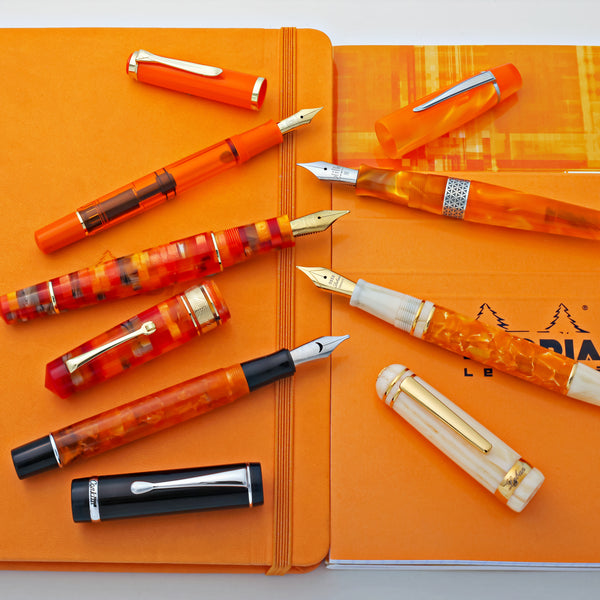Can I use my fountain pen as a dip pen?
Yes, it’s possible to use your fountain pen as a dip pen. However, there are a few factors to keep in mind. Fountain pens have a feed mechanism that guides the flow of ink. When you bypass that mechanism by using it as a dip pen, there is a risk of the feed getting clogged. Be sure to thoroughly clean your fountain pen nib after using it as a dip pen to prevent affecting its future performance.
Is a dip pen or fountain pen better for drawing?
The answer to this question depends entirely on your preference as an artist. The dip pen vs fountain pen each have pros and cons based on the kind of drawings you create. Dip pen nibs come in endless varieties of widths, sizes and textures at a fraction of the cost of fountain pen nibs. They are also easy to clean and swap out for a different one mid-art project. Dip pens are compatible with many different kinds of inks, like India ink, calligraphy and acrylic inks that come in all colors.
While dip pens rank high in adaptability, fountain pens are higher in consistency. Instead of having to repeatedly dip into an inkwell, their internal reservoir allows for a steady ink flow. They are less messy and more portable for traveling. Many artists use both pen types, dip pens for expressive, bold strokes and fountain pens for more detailed, controlled lines.
Is a dip pen better than a fountain pen?
What kind of projects do you do most often? Are you more of a writer or an artist and calligrapher? Your answer will help determine the better pen for you.
While fountain pen calligraphy is a thing, dip pens are ideal for calligraphy. They are more involved than fountain pens and the ink viscosity will differ depending on the kind used. There are a plethora of affordable dip pen nibs available, which is a huge pro. Fountain pens are better for everyday tasks: writing letters, making signatures, and using stationary. Generally speaking, we recommend fountain pens for writers and dip pens for calligraphers and illustrators.
Before You Dip Out…
When considering a fountain pen vs dip pen, it comes down to durability vs flexibility. Fountain pens are generally more durable and less flexible, while dip pens in comparison are less durable but more flexible. It all depends on your desired aesthetic and personal preference.
While you can’t have the best of both worlds, we hope this article helps you find the best pen for your world. Let us know in the comments below which way you’re leaning in the dip pen vs fountain pen discussion!





